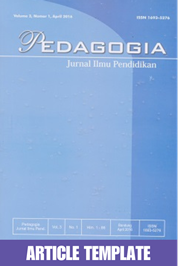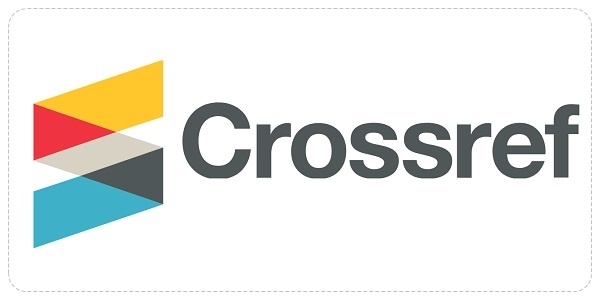PENGEMBANGAN KARIR TENAGA KEPENDIDIKAN DI UNIVERSITAS JAMBI: EXPLORATORY DAN CONFIRMATORY FAKTOR ANALISIS
Abstract
Abstrak
Pengembangan sumber daya manusia diakui semakin penting perannya untuk memenuhi tuntutan pekerjaan atau posisi sebagai hasil dari kemajuan ilmu pengetahuan dan teknologi serta persaingan yang semakin ketat di antara organisasi atau lembaga serupa. Setiap karyawan atau staf dituntut untuk dapat bekerja secara efektif dan efisien dalam menyelesaikan pekerjaan dengan menunjukkan kualitas dan kuantitas pekerjaan yang baik dalam rangka mengembangkan daya saing organisasi. Desain survei dalam penelitian ini digunakan untuk menganalisis struktur faktor pengembangan karir untuk tenaga kependidikan di Universitas Jambi. Dengan menggunakan cluster random sampling, responden yang terlibat adalah 164 Tenaga Kependidikan di Universitas Jambi. Tahapan penelitian ini bertujuan untuk menguji validitas instrumen dengan data kuantitatif dianalisis menggunakan exploratory factor analysis (EFA) menggunakan SPSS 23.0 untuk menentukan struktur dan mengeksplorasi faktor-faktor dalam variabel indikator Pengembangan Karir. Confirmatory factor Analysis (CFA) First Order dan Second Order dilakukan untuk memverifikasi validitas faktorial konstruk pengembangan karir. CFA dapat memberikan bukti lebih lanjut tentang kesesuaian model yang disarankan dengan mempertimbangkan struktur faktor-faktor yang diidentifikasi melalui EFA. Temuan dari fase penelitian ini menyimpulkan bahwa ada empat faktor dalam struktur pengembangan karir tenaga kependidikan di Universitas Jambi.
Abstract
Human resource development is recognized as increasingly important in fulfilling the demands of work or position as a result of advances in science and technology and increasingly fierce competition among similar organizations or institutions. Every employee or staff is required to be able to work effectively and efficiently in completing work by showing good quality and quantity of work in order to develop organizational competitiveness. The survey design in this study was used to analyze the factor structure of Career Development for Educational Personnel at Jambi University. By using cluster random sampling, the respondents involved were 164 Education Personnel at Jambi University. The stages of this study aim to test the validity of the instrument with quantitative data analyzed using exploratory factor analysis (EFA) using SPSS 23.0 to determine the structure and explore the factors in the Career Development indicator variable. Confirmatory factor Analysis (CFA) First Order and Second Order are conducted to verify the factorial validity of the career development construct. The CFA can provide further evidence of the suitability of the proposed model by considering the structure of the factors identified through the EFA. The findings from this research phase conclude that there are four factors in the structure of the career development of educational staff at the University of Jambi.
Keywords
Full Text:
PDF (Bahasa Indonesia)References
Aycan, Z., & Fikret-Pasa, S. (2003). Career choices, job selection criteria, and leadership preferences in a transitional nation: The case of Turkey. Journal of Career Development, 30(2), 129-144.
Brown, S. D., Unger Hu, K. A., Mevi, A. A., Hedderson, M. M., Shan, J., Quesenberry, C. P., & Ferrara, A. (2014). The Multigroup Ethnic Identity Measure—Revised: Measurement invariance across racial and ethnic groups. Journal of counseling psychology, 61(1), 154.
Choi, D. L. (2006). Development of a diagnosis model for pay-for-performance in the public sector and its application: Focused on agencies. International Review of Public Administration, 11(2), 29-41.
Chuang, N. K., & Dellmann-Jenkins, M. (2010). Career decision making and intention: A study of hospitality undergraduate students. Journal of Hospitality & Tourism Research, 34(4), 512-530.
Creswell, J. W. (2014). Research Design: Qualitative, Quantitative, and Mixed Methods Approaches. California: SAGE Publications, Inc.
Chua, Y. P. (2014). Ujian regresi, analisis faktor, dan analisis SEM. Shah Alam: McGraw Hill Education.
Fraenkel, J. R., & Wallen, N. E. (2009). How to Design and Evaluate Research in Education. New York: McGraw-Hill.
Frohlich, M. T., & Westbrook, R. (2001). Arcs of integration: an international study of supply chain strategies. Journal of operations management, 19(2), 185-200.
Garson, G. D. (2012). Testing statistical assumptions. Asheboro, NC: Statistical Associates Publishing.
Gottfredson, L. S. (2005). Using Gottfredson’s theory of circumscription and compromise in career guidance and counseling. Career development and counseling: Putting theory and research to work, 71-100.
Elvitigalage Dona, N. G., Amaratunga, R. D. G., & Haigh, R. P. (2006). The impact of culture on career development of women in construction. In Proceedings of 6th International Postgraduate Research Conference in the Built and Human Environment.
Hair, J. F., Black, W. C., Babin, B. J., Anderson, R. E., & Tatham, R. L. (2006). Multivariate data analysis 6th Edition. Pearson Prentice Hall. New Jersey. humans: Critique and reformulation. Journal of Abnormal Psychology, 87, 49-74.
Hair, J. F., Black, W. C., Babin, B. J., & Anderson, R. E. (2010). Multivariate data analysis (7th Edition). Englewood Cliffs, NJ: Prentice Hall.
Kim, M. Y., Yu, H. J., & Park, S. M. (2017). Examining and testing the roles of human resource development (HRD) in the public sector: evidence from US federal agencies. International Review of Public Administration, 22(1), 60-86.
Lee, J. W., Cho, Y. J., & Kim, S. E. (2009). Improving performance: Does performance-oriented management really matter? International Review of Public Administration, 13, 17–34.
Napitupulu, S., Haryono, T., Laksmi Riani, A., Sawitri, H. S. R., & Harsono, M. (2017). The impact of career development on employee performance: an empirical study of the public sector in Indonesia. International Review of Public Administration, 22(3), 276-299.
Osibanjo, A. O., Oyewunmi, A. E., & Ojo, I. S. (2014). Career development as a determinant of organizational growth: Modelling the relationship between these constructs in the Nigerian banking industry. American International Journal of Social Sciences, 3(7), 67-76.
Sunyoto, D. (2013). Manajemen sumber daya manusia. Yogyakarta: CAPS.
Schumacker, R. E., & Lomax, R. G. (2010). Structural equation modelling: Third Edition. New York: Taylor & Francis Group.
Weng, Q., McElroy, J. C., Morrow, P. C., & Liu, R. (2010). The relationship between career growth and organizational commitment. Journal of Vocational Behavior, 77(3), 391-400.
DOI: https://doi.org/10.17509/pdgia.v18i2.25278
Refbacks
- There are currently no refbacks.
INDEXED BY

This work is licensed under a Creative Commons Attribution-ShareAlike 4.0 International License
















